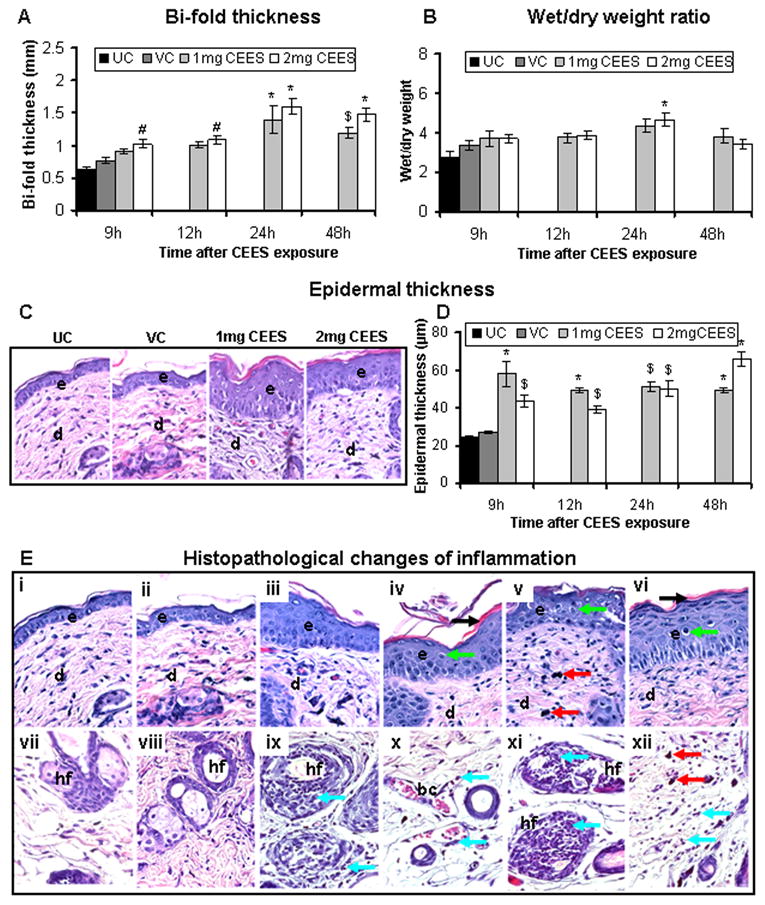Fig. 2.

CEES topical exposure at 1 or 2 mg dose causes inflammation-related histopathological alterations in male SKH-1 hairless mouse skin. Following 1 or 2 mg CEES and control exposures, skin bi-fold thickness (A) and wet/dry weight ratio (B) were recorded as detailed in Materials and Methods. Representative H&E stained skin tissue sections from untreated control, vehicle control, and 1 or 2 mg CEES exposed mice at 9 h post exposure, showing changes in epidermal thickness (×400 magnification; C) and its measurement (D) Representative H&E stained skin sections from untreated (i and vii) and vehicle (ii and viii) controls, 2 mg CEES for 9 (iii, ix and x), 12 (iv, xi and xii), 24 (v) and 48 (vi) h, ×400 magnification (E). Data presented are mean ± SEM of five animals in each treatment group. Statistical significance of difference between the CEES exposed and untreated control group was determined by one way ANOVA followed by Bonferroni t-test for pair wise multiple comparisons. *, p<0.001; $, p<0.01 and #, p<0.05 as compared to untreated control group. UC, untreated control; VC, vehicle control; e, epidermis; d, dermis; hf, hair follicle; bc, blood capillary; black arrow, epidermal necrosis; red arrows, mast cells; blue arrows, neutrophils; green arrows, langerhans cells.
